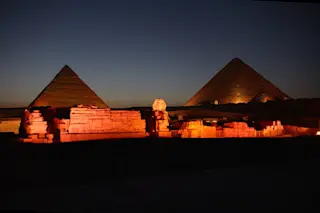Do the Egyptian pyramids line up with the stars?
This idea gets tossed around so often that many ancient Egypt fans simply accept it as true. And on the surface, it seems plausible. The ancient Egyptians tracked the night sky closely. They studied the constellations and used the motion of the stars to make decisions about when to plant crops and when to harvest. But there’s been a long debate over whether the pyramids themselves are actually aligned with any particular set of stars.
Over the decades, researchers have proposed a handful of possible celestial alignments for the pyramids, especially with the Giza Pyramid Complex. This famous site outside Cairo includes the Great Sphinx and three main pyramids: the Pyramid of Menkaure, the Pyramid of Khafre, and the Great Pyramid of Giza.
But the pyramids were built in the decades around 2500 B.C., during a period called the Old Kingdom ...














